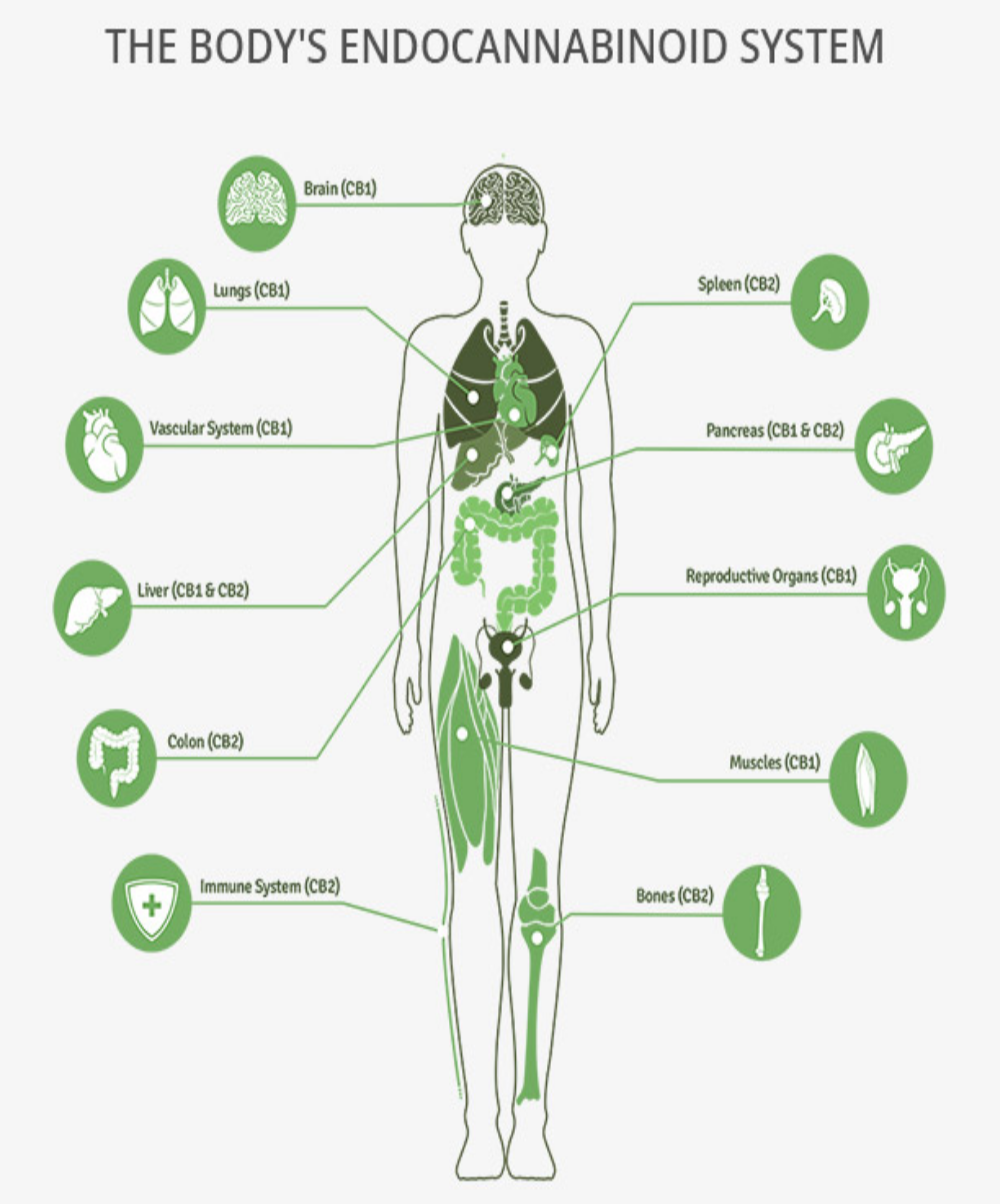Lately we hear a lot of people talking about the endocannabinoid system, and we get a lot of questions about it. Do we really have cannabis-like receptors in our body? How do they work? Is this the reason so many people find CBD helpful in their lives?
Let’s get scientific for a moment.
In a 1988 government funded study at St. Louis University School of Medicine, Allyn Howlett and William Devane determined that the human brain has receptor sites that respond to compounds found in cannabis – cannabinoid receptors. These receptors turned out to be the most abundant type of neurotransmitter receptor in the brain.
After this discovery, the legal status of cannabis slowed research on cannabinoid receptors, but thanks to the ever enduring curiosity of scientists, it didn’t stop it.
In 1990 a team lead by Lisa Matsuda at the National Institute of Mental health mapped the DNA sequence that encodes a cannabinoid receptor in the brain, and Matsuda was able to clone this receptor. This development lead to further studies, Matsuda’s team proved that THC works by activating cannabinoid receptors in the brain. At the same time, another cannabinoid, CB2, was discovered to be present in the immune system and peripheral nervous system.
In 1992, at the Hebrew University in Jerusalem, Dr. Lumir Hanus and Dr. William Devane discovered the endocannabinoid anandamide, and went on to discover a second major endocannabinoid 2-arachidonoylglycerol (2-AG) as well as a handful of lesser known endocannabinoids.
So how does it all work?
In recent years, more research opportunities have opened up and we know that there are three parts to the endocannabinoid system (ECS): endocannabinoids, receptors, and enzymes.
- Endocannabinoids are molecules that are produced by your body as needed, and help keep your internal functions running smoothly.
- There are two main endocannabinoid receptors, CB1 and CB2. Endocannabinoids can bind to either receptor, signaling that the ECS needs to take action by relieving pain, or alerting the body of inflammation.
- Enzymes are responsible for breaking down endocannabinoids once they’ve carried out their function.
Don’t worry if it seems complicated. Like many functions of the human body, even the experts haven’t determined exactly how it works. However, research has linked the ECS to a few functions including: digestion, inflammation, mood, memory, sleep, stress, and nerve function just to name a few.
And here’s how it all relates to the cannabis plant: Once in your body, THC interacts with your ECS by binding to receptors, including CB1 and CB2. This produces a range of effects, some more desirable than others. For example, THC may help to reduce pain and stimulate your appetite. But it can also cause paranoia and anxiety in some cases.
The other major cannabinoid found in cannabis is cannabidiol (CBD). Unlike THC, CBD doesn’t make you “high” and typically doesn’t cause any negative effects. Experts aren’t completely sure how CBD interacts with the ECS, but many believe it works by preventing endocannabinoids from being broken down. This allows them to have more of an effect on your body.
For this reason, a good quality, full spectrum CBD product may be a good solution for a wide range of people. There are still trace amounts of THC to bind with those CB1 and CB2 receptors, but without the undesired effects of a high THC product.
Sources:
https://www.labroots.com/trending/cannabis-sciences/8456/endocannabinoid-system-discovered

